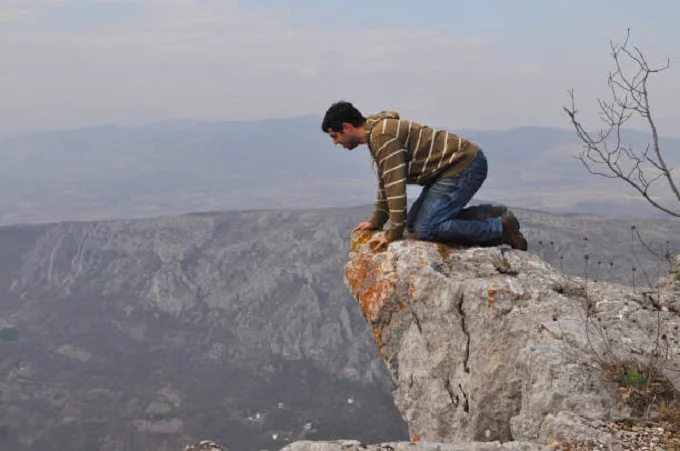Acrophobia (fear of heights); causes, symptoms, treatment and prevention

Not everyone can fearlessly approach the edge of a mountain or climb a tall building. We have a natural impulse to protect ourselves. However, there are times when height creates panic and fear. What causes it, and how do you deal with it?
A panic attack is a sign of phobic disorder when merely the idea of walking out onto a high-rise building’s balcony and gazing down causes sweating and a beating heart.
What is the name for fear of heights?
Acrophobia is a panicked, pathological fear of heights. This is a rather common phobia that affects a large number of people. To get the latest stories, install our app here
Acrophobia may cause many problems for a person, particularly if his job involves living in a city and having to remain in tall structures. People may be afraid of elevators, stairs, or escalators that take them to a high floor. Without treatment, this fear may worsen, leading to feelings of isolation, stress, and health problems.
Causes of Acrophobia(fear of heights)

Fear of heights is a normal reaction since it is part of our survival instinct. However, there are no physiological symptoms, panic, or paralyzing terror. Under some conditions, pathological deviations, such as height phobias, might arise. They are classified into two categories:
Psychological fear of heights due to increased sensitivity, fixation on specific episodes seen in films, real-life or told by people. This provokes a focus on a particular problem in receptive and emotional personalities. As a result, fear is cultivated, which is especially strong when specific circumstances coincide. Often issues are possible in people with disorders of the vestibular apparatus, suffering from instability and dizziness. To get the latest stories, install our app here
Often the fear of heights for no reason can occur after experiencing stress severe moral trauma. Consequences lead to certain events or situations, forming an uncontrollable horror.
Symptoms of acrophobia(fear of heights)

An attack of acrophobia or a panic fear of heights most often accompanies:
- Dizziness even at a low altitude, a fainting state that threatens to fall, the inability to stand on one’s feet – a person, feeling a similar symptom, convulsively grabs objects, trying not to fall;
- vibrations that are felt in the temples chest – sometimes this is also accompanied by discomfort in the chest;
- severe shortness of breath, a feeling of lack of air – difficulty breathing negatively affects health and the psyche, which leads not just to fear, but to a real panic attack;
- increased sweating – due to fear and the release of a large portion of stress hormones, it leads to increased sweating, the skin becomes covered with cold, sticky sweat;
- dry mouth due to suppression of salivation as a reaction to stress hormones, a metallic taste in the mouth is also possible, problems with swallowing saliva, chewing, breathlessness – because of this, a person may realize that it is difficult for him to ask for help;
- trembling of the limbs and trembling in the body – overexcitation and emotional stress lead to tremors muscle contraction with trembling, which worsens the condition in combination with other factors.
Treatment of acrophobia (fear of heights)

If acrophobia is serious, it can significantly complicate a person’s life and requires treatment by a specialist. Without therapy, habitual activities may become impossible.
Diagnostics
The basis of the diagnosis is a detailed discussion of all the symptoms that the patient has, with a detailed study of the anamnesis (medical history) of the disease and life. This allows the doctor to find out where the phobia came from. In addition, the doctor can conduct a series of tests that will show the severity of the condition the presence of additional problems – depression panic attacks. To get the latest stories, install our app here
Methods of treatment
The treatment of acrophobia is either by a psychotherapist or a clinical psychologist. Although there is a general algorithm for helping with phobic disorders, each person is intensely individual, and therapy is explicitly built for his personality. Conventionally, we can divide therapy into two stages. The first is to work with thinking and emotions, in which we analyze various distortions of thought, learn to work with emotions, and study self-regulation techniques. The second is gradual exposure, i.e. contact with the patient’s specific situation that causes the phobia.
Prevention of acrophobia (fear of heights) at home

First and foremost, the logical upbringing of the child, the establishment of a healthy attitude toward the surrounding world without risky behaviour, but also without excessive supervision and prohibitions, is the base for the avoidance of any phobia.




